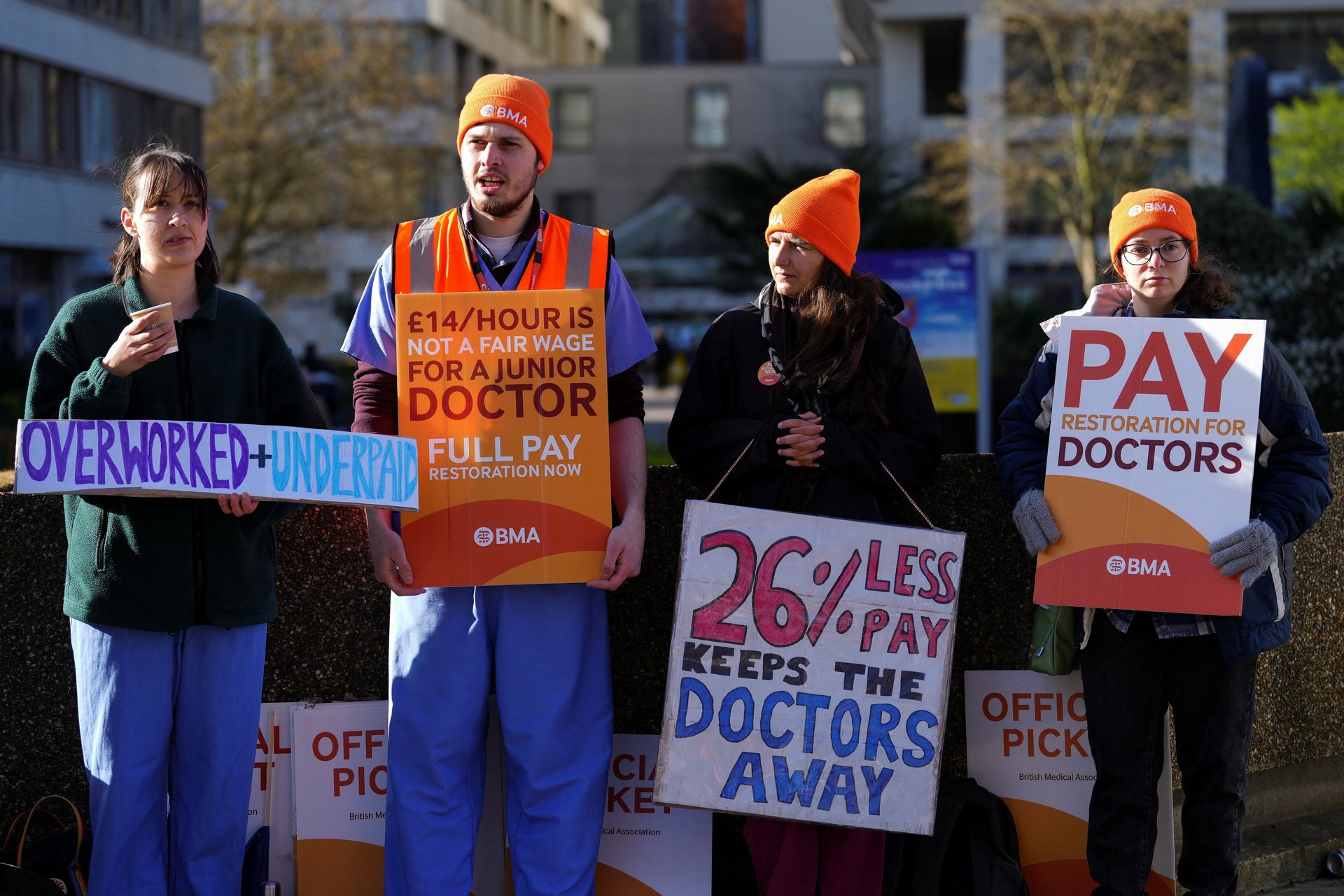UK doctors are striking over being paid $17.40 an hour
A four-day strike by junior NHS doctors is expected to cause the most disruption in 75 years

Junior doctors at the UK’s troubled National Health Service (NHS) started a 96-hour strike today (April 11), which the UK government says could be the “most disruptive” healthcare strike yet. It is the latest installment in a season of industrial action, during which strikes by medical personnel have grown progressively bigger.
Suggested Reading
The British Medical Association (BMA), the union representing doctors, argues that pay rises over the last 15 years have not kept pace with inflation, and have in fact amounted to a pay decrease of 25% from the salaries offered in 2008-09. The BMA has framed its demand of a 35% raise as a “pay restoration” to align salaries to the level of the previous decade.
Related Content
Junior doctors have medical degrees but are considered to be in training. A first-year junior doctor working a 40-hour week earns an annual salary (pdf) of £29,384 ($36,518), or £14.09 per hour ($17.41). A junior doctor with six to eight years of experience earns £28 per hour.
Roughly half the NHS’s healthcare workers will not be at work this this week, including strikers as well as staff on leave for the Easter holiday. The NHS estimates that the strike will result in 250,000 delayed appointments and that they cannot guarantee patient safety during the walkout. Hospitals plan to prioritize emergency services, maternity care, and critical care.
For now, the BMA says the government has refused to negotiate, while the government has called the BMA’s starting position of a 35% pay raise “unreasonable.”
Labor strikes have spiked in the UK
The UK’s policy of fiscal austerity, which began in 2010, has gutted the NHS, resulting in longer wait times, plummeting patient satisfaction, worse outcomes, and a growing workforce crisis, with fewer staff working in deteriorating conditions. This chronic underfunding, combined with rising inflation, has driven a rash of strikes across the NHS.
It has been a restive few months for the UK’s health service. Roughly 100,000 nurses went on strike last December, and then again in February, along with ambulance staff and physiotherapists, in the largest strike of the NHS’s 75-year history. Last month, junior doctors walked out during a three-day strike, which forced an estimated 175,000 procedures and appointments to be canceled.
Following these strikes, the UK offered nurses a one-time payment of at least £1,655 and a 5% pay rise, below both the 14% unions had demanded and the UK’s inflation rate, which hovers around 10%. Nurses have not yet accepted the offer.
Aside from healthcare, workers in other public services have struck or threatened to strike; these have included teachers, garbage collectors, lawyers, postal workers, border officers, and rail workers. This season’s spike in walkouts is the UK’s highest in years, but it remains a fraction of the industrial action seen in previous decades.